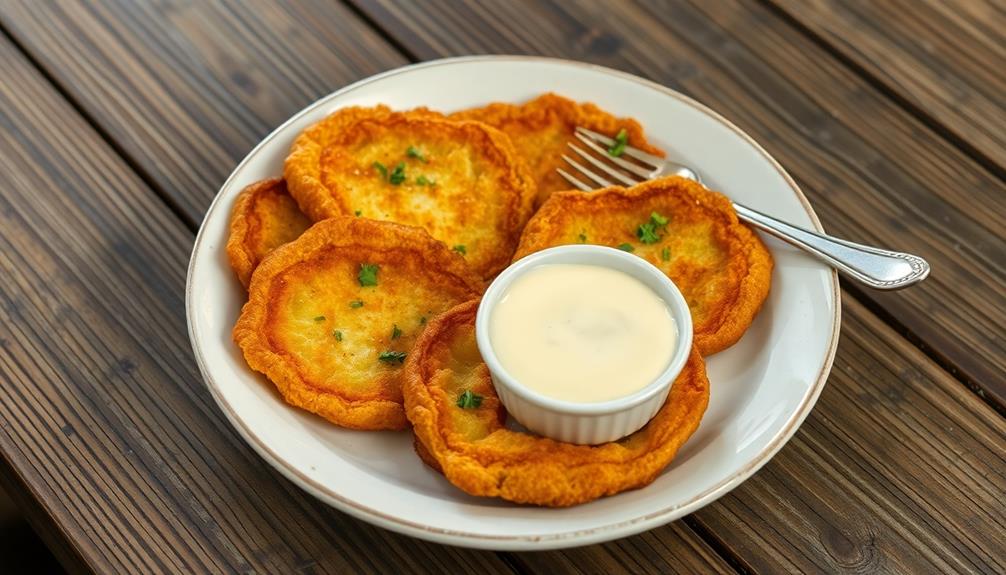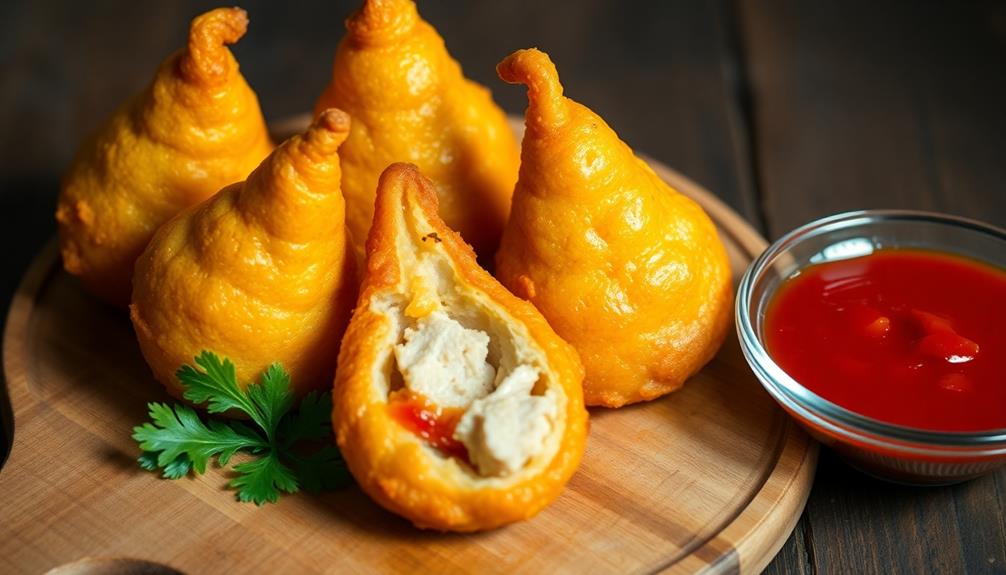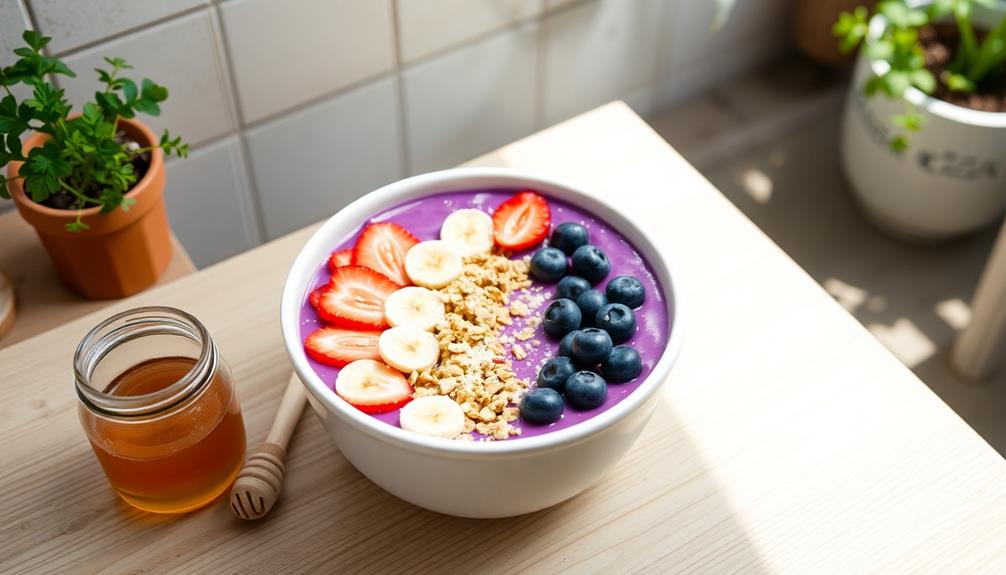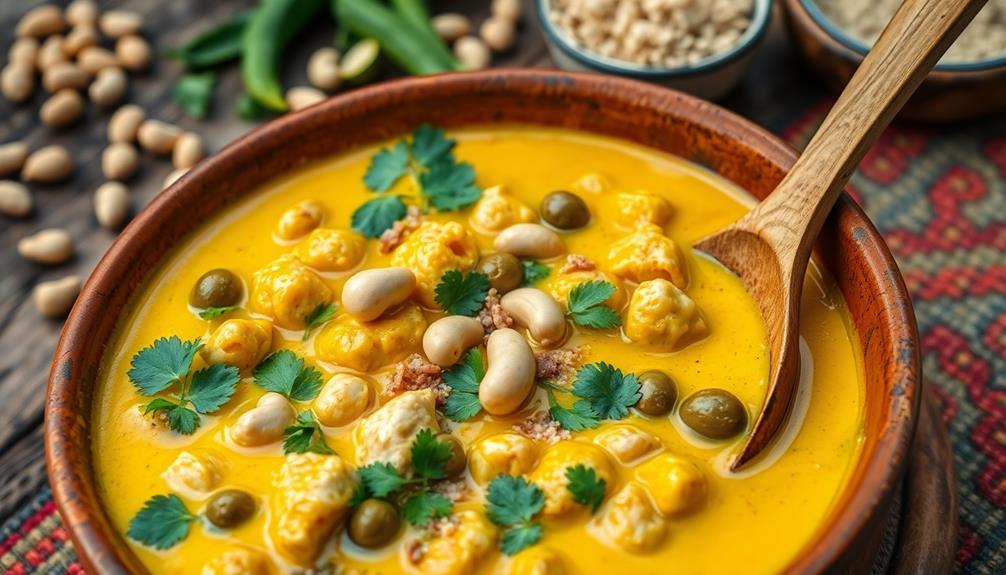Tapioca, a starch from cassava roots, is a culinary superstar you'll love! It's used in puddings, bubble tea, and as a thickener. You can buy it as pearls, flour, or flakes. To cook tapioca pearls, soak them overnight, then boil until they're clear. For a classic treat, try making tapioca pudding with milk, sugar, and vanilla. It's naturally gluten-free, making it great for those with dietary restrictions. You can get creative by adding fruits, spices, or using it in savory dishes. There's so much more to discover about this versatile ingredient!
Key Takeaways
- Tapioca is a starch extracted from cassava roots, used in various culinary applications worldwide.
- It's commonly prepared as small pearls for puddings, desserts, and bubble tea.
- Tapioca is naturally gluten-free, making it suitable for those with gluten sensitivities or celiac disease.
- It serves as a versatile thickening agent in soups, sauces, and baked goods.
- Tapioca offers a chewy texture and neutral flavor, allowing it to absorb and complement other ingredients.
History
Throughout history, tapioca has played a significant role in many cultures. You might be surprised to learn that this versatile food has been around for thousands of years!
It all started in South America, where indigenous people discovered how to make tapioca from the cassava plant's roots. They'd grind the roots into a pulp, squeeze out the liquid, and dry the remaining starch to create tapioca flour.
As explorers traveled the world, they brought tapioca with them. It quickly spread to other tropical regions, becoming a staple food in many countries. You'll find it's especially popular in Southeast Asia, where it's used in sweet desserts and savory dishes alike. In Brazil, tapioca is also widely used, particularly in the traditional Brazilian moqueca recipe, a delicious fish stew that often includes tapioca pearls to thicken the broth. Its versatility and ability to adapt to different culinary traditions have made tapioca a beloved ingredient in cuisines around the world. Whether enjoyed in a comforting pudding or a spicy stew, tapioca continues to be a global favorite.
In the 1800s, tapioca made its way to Europe and North America, where it became known as a thickening agent for puddings and pies.
During World War II, tapioca became even more important. It was a valuable food source because it's easy to grow and doesn't spoil quickly.
Today, you can enjoy tapioca in many forms, from bubble tea pearls to gluten-free flour alternatives!
Recipe
Tapioca, a versatile and popular ingredient derived from cassava root, can be used in a variety of desserts and beverages. One of the most beloved preparations is tapioca pudding, a creamy and comforting treat enjoyed by people of all ages.
This recipe for classic tapioca pudding combines the chewy texture of tapioca pearls with a smooth, vanilla-infused custard. The result is a delightful dessert that can be served warm or chilled, making it perfect for any season or occasion.
- 1/3 cup small tapioca pearls
- 2 3/4 cups whole milk
- 1/4 teaspoon salt
- 1/3 cup granulated sugar
- 2 large eggs
- 1 teaspoon vanilla extract
Begin by soaking the tapioca pearls in 1 cup of the milk for 30 minutes. In a medium saucepan, combine the soaked tapioca mixture with the remaining milk, salt, and sugar. Cook over medium heat, stirring constantly, until the mixture comes to a boil.
Reduce heat to low and simmer for 10-15 minutes, stirring frequently, until the tapioca pearls are translucent. In a separate bowl, whisk the eggs. Slowly add a small amount of the hot tapioca mixture to the eggs, whisking constantly to temper them.
Pour the egg mixture back into the saucepan and cook for an additional 2-3 minutes, stirring constantly. Remove from heat and stir in the vanilla extract. Allow the pudding to cool slightly before serving, or refrigerate for a chilled dessert.
For the best results, use small tapioca pearls rather than instant tapioca. If the pudding becomes too thick upon cooling, you can thin it out with a little milk. Experiment with different flavors by adding cinnamon, nutmeg, or fresh fruit to the pudding.
To prevent a skin from forming on the surface as it cools, press plastic wrap directly onto the surface of the pudding.
Cooking Steps
To cook tapioca pearls, you'll need to follow a few important steps.
First, you'll rinse and soak the pearls overnight, which helps them cook more evenly.
Then, you'll boil the pearls until they're translucent, drain and rinse them, and finally add your favorite sweetener before serving your tasty treat!
Step 1. Rinse Tapioca Pearls Thoroughly
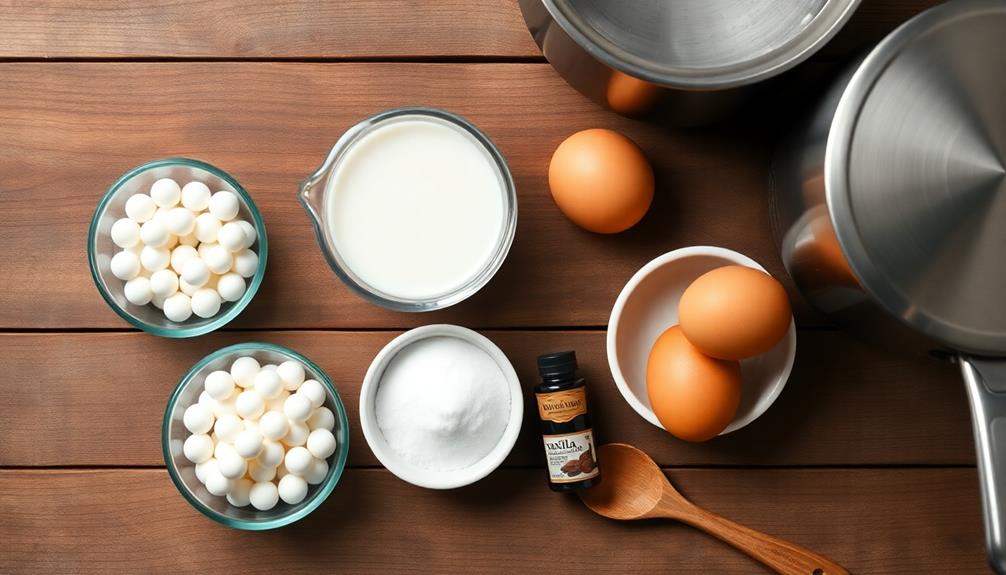
Before cooking, you'll need to rinse your tapioca pearls thoroughly. This step is super important because it helps remove any excess starch or debris from the pearls. You don't want any yucky stuff in your delicious tapioca treat!
Start by placing your tapioca pearls in a fine-mesh strainer or colander. Hold it under cool running water, and gently swish the pearls around with your hand. You'll notice the water might look a bit cloudy at first – that's totally normal!
Keep rinsing until the water runs clear, which usually takes about 30 seconds to a minute. As you're rinsing, take a moment to feel the texture of the pearls. They're small and round, almost like tiny marbles! It's pretty cool how these little guys will puff up when you cook them.
Once you're done rinsing, give the strainer a good shake to remove excess water. Now your tapioca pearls are clean and ready for the next exciting step in your cooking adventure!
Step 2. Soak Pearls in Water Overnight
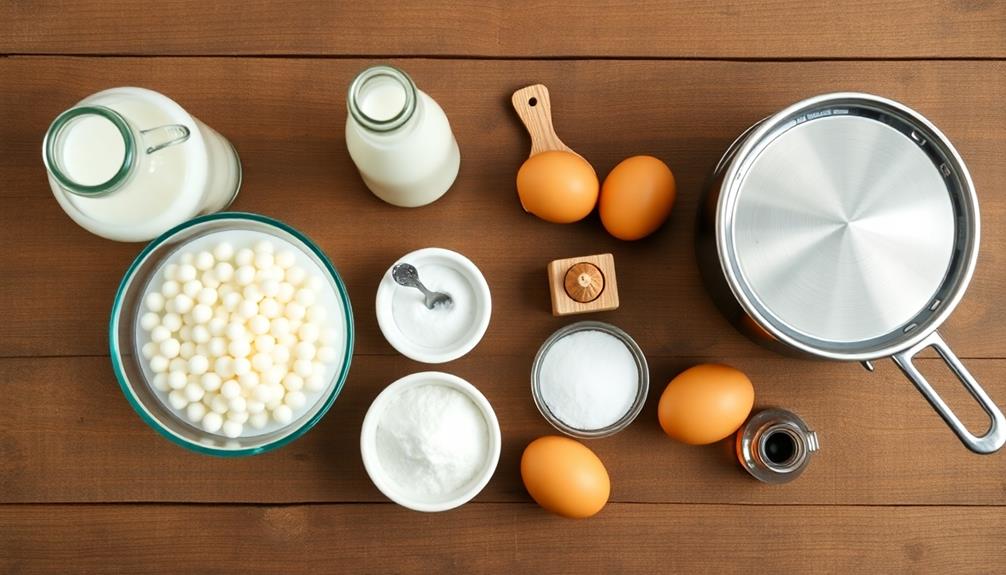
Now that your tapioca pearls are clean, it's time for an important step: soaking them overnight. This process is crucial for achieving the perfect texture in your tapioca dishes. You'll need a large bowl and plenty of cool water to get started.
First, place your rinsed tapioca pearls in the bowl and add enough water to cover them completely. The pearls will absorb water as they soak, so make sure there's plenty of extra liquid. You'll want to use about four times as much water as pearls.
As they soak, you'll notice the pearls start to expand and become softer. Leave the bowl on your kitchen counter or in the refrigerator overnight.
In the morning, you'll find that your tapioca pearls have grown significantly larger and become much more pliable. They're now ready for cooking! This soaking step helps ensure that your pearls will cook evenly and become deliciously chewy.
It's like giving your tapioca a relaxing spa day before the big show!
Step 3. Boil Pearls Until Translucent
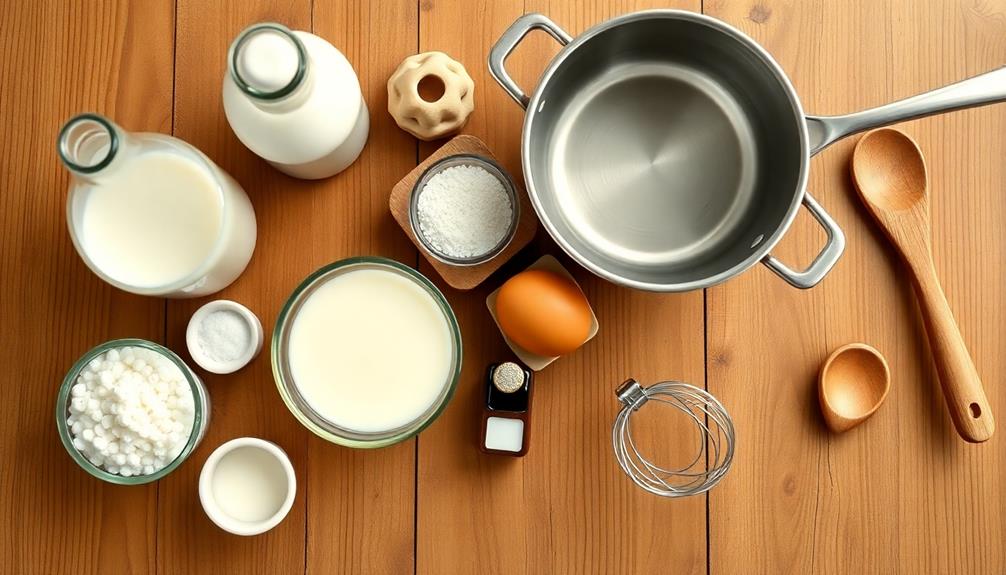
After soaking, your tapioca pearls are ready for the crucial cooking stage. It's time to transform those opaque little balls into the translucent, chewy delights we all love!
First, grab a large pot and fill it with plenty of water. You'll want to use about 4 cups of water for every cup of pearls you're cooking.
Now, let's get that water boiling! Once it's bubbling away, carefully add your soaked tapioca pearls. Give them a gentle stir to make sure they don't stick together. You'll notice they'll start to float to the surface – that's normal!
Keep the water at a rolling boil and stir occasionally. As they cook, you'll see a magical transformation happen. The pearls will slowly become clear from the outside in, with just a tiny white dot in the center. This process usually takes about 15-20 minutes, but keep an eye on them. You don't want to overcook these little gems!
Once they're almost completely clear, turn off the heat and let them sit in the hot water for a few more minutes. They'll finish cooking and reach that perfect, translucent state you're aiming for.
Step 4. Drain and Rinse Cooked Pearls
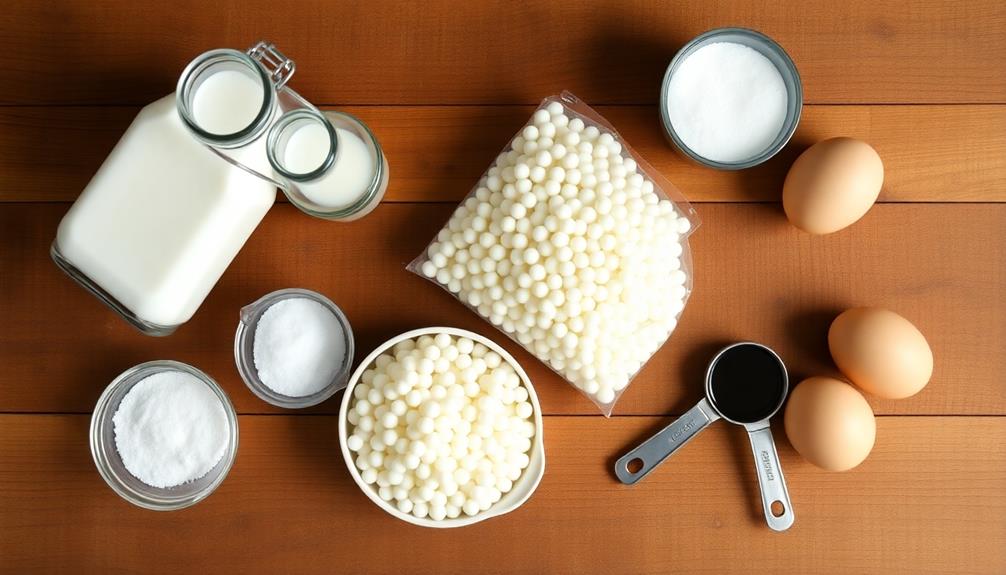
The final step in preparing your tapioca pearls is crucial for achieving the perfect texture. Once your pearls are translucent and tender, it's time to drain and rinse them. Grab a colander and carefully pour the cooked pearls into it, letting the hot water drain away. Be sure to use oven mitts or a kitchen towel to protect your hands from the steam!
Now, here's the fun part: give your pearls a quick rinse under cool running water. This stops the cooking process and helps prevent them from sticking together. Gently shake the colander to make sure all the pearls get rinsed evenly. You'll notice they feel kind of slippery and bouncy – that's exactly what you want!
Once they're rinsed, let the pearls sit in the colander for a minute or two to drain completely. You don't want any extra water diluting your dessert or drink.
Now your tapioca pearls are ready to use! Add them to your favorite bubble tea, pudding, or dessert recipe. They'll be chewy, sweet, and absolutely delicious. Enjoy your homemade tapioca treat!
Step 5. Add Sweetener and Serve
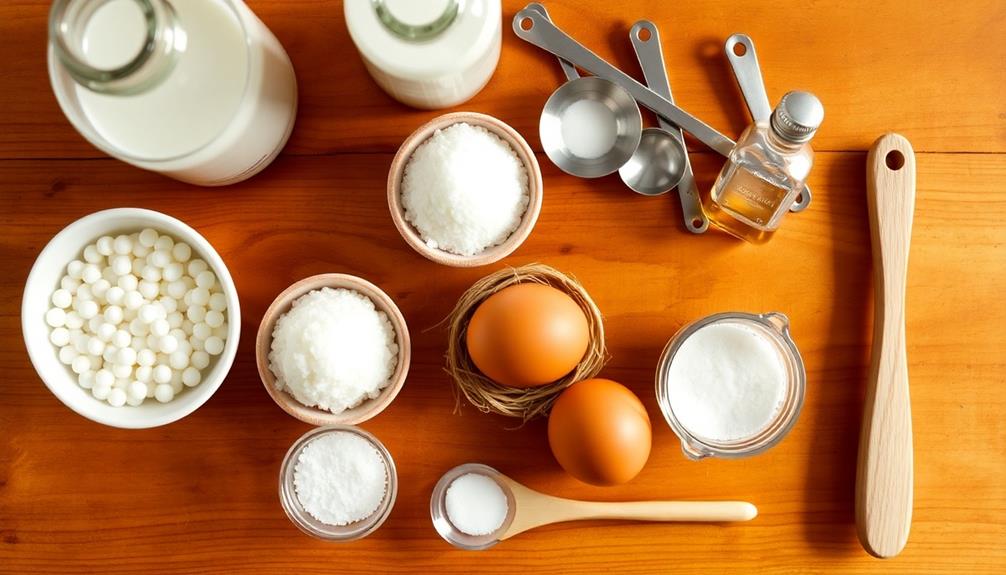
Along with the perfectly cooked and rinsed tapioca pearls, it's time to add some sweetness to your creation. You've got lots of yummy options to choose from! Many people love adding sugar, honey, or maple syrup to their tapioca.
If you're feeling fancy, try a sprinkle of brown sugar for a rich, caramel-like flavor. Don't forget about fruit syrups or even chocolate sauce if you're in the mood for something extra special!
Once you've picked your sweetener, it's time to serve. Spoon your tapioca pearls into pretty bowls or glasses. If you're making a classic tapioca pudding, you might want to chill it in the fridge for a bit.
But if you prefer it warm, go ahead and dig in right away! For an extra treat, top your tapioca with fresh fruit, a dollop of whipped cream, or a sprinkle of cinnamon. You can even add a scoop of ice cream for a super indulgent dessert.
Final Thoughts
From out of the world of tropical starches, tapioca has emerged as a versatile and beloved ingredient. You've learned how to prepare this delightful treat, from soaking the pearls to cooking them to perfection.
Now, you're ready to experiment with different flavors and toppings to create your own unique tapioca masterpieces!
Remember, tapioca isn't just for pudding. You can use it in savory dishes, as a thickener for soups and sauces, or even as a gluten-free flour substitute. It's a fantastic addition to your kitchen arsenal, offering endless possibilities for creative cooking.
As you continue your culinary adventures with tapioca, don't be afraid to try new things. Mix it with fresh fruits, add it to smoothies, or use it as a base for bubble tea. The sky's the limit!
And don't forget, tapioca is naturally gluten-free, making it a great option for those with dietary restrictions.
Frequently Asked Questions
Is Tapioca Gluten-Free?
Yes, you'll be happy to know that tapioca is naturally gluten-free. It's derived from cassava root, not wheat or other gluten-containing grains. You can safely enjoy tapioca if you're following a gluten-free diet or have celiac disease.
Can Tapioca Be Used as a Thickening Agent in Savory Dishes?
You can definitely use it as a thickening agent in savory dishes. It's versatile and works well in soups, stews, and sauces. You'll find it adds a smooth, glossy texture without altering the flavor much.
What Is the Difference Between Tapioca Flour and Tapioca Starch?
You'll find there's no difference between tapioca flour and tapioca starch. They're the same product, made from cassava root. You can use them interchangeably in recipes for thickening, binding, or gluten-free baking.
Are There Any Health Benefits Associated With Consuming Tapioca?
You'll find some health benefits when consuming tapioca. It's gluten-free, low in calories, and easy to digest. While not nutrient-dense, it can be a good energy source. It's also suitable for those with food allergies.
Can Tapioca Pearls Be Stored Long-Term, and if So, How?
Yes, you can store tapioca pearls long-term. Keep them in an airtight container in a cool, dry place. They'll last up to a year. For extended storage, you can freeze them for up to 18 months.

